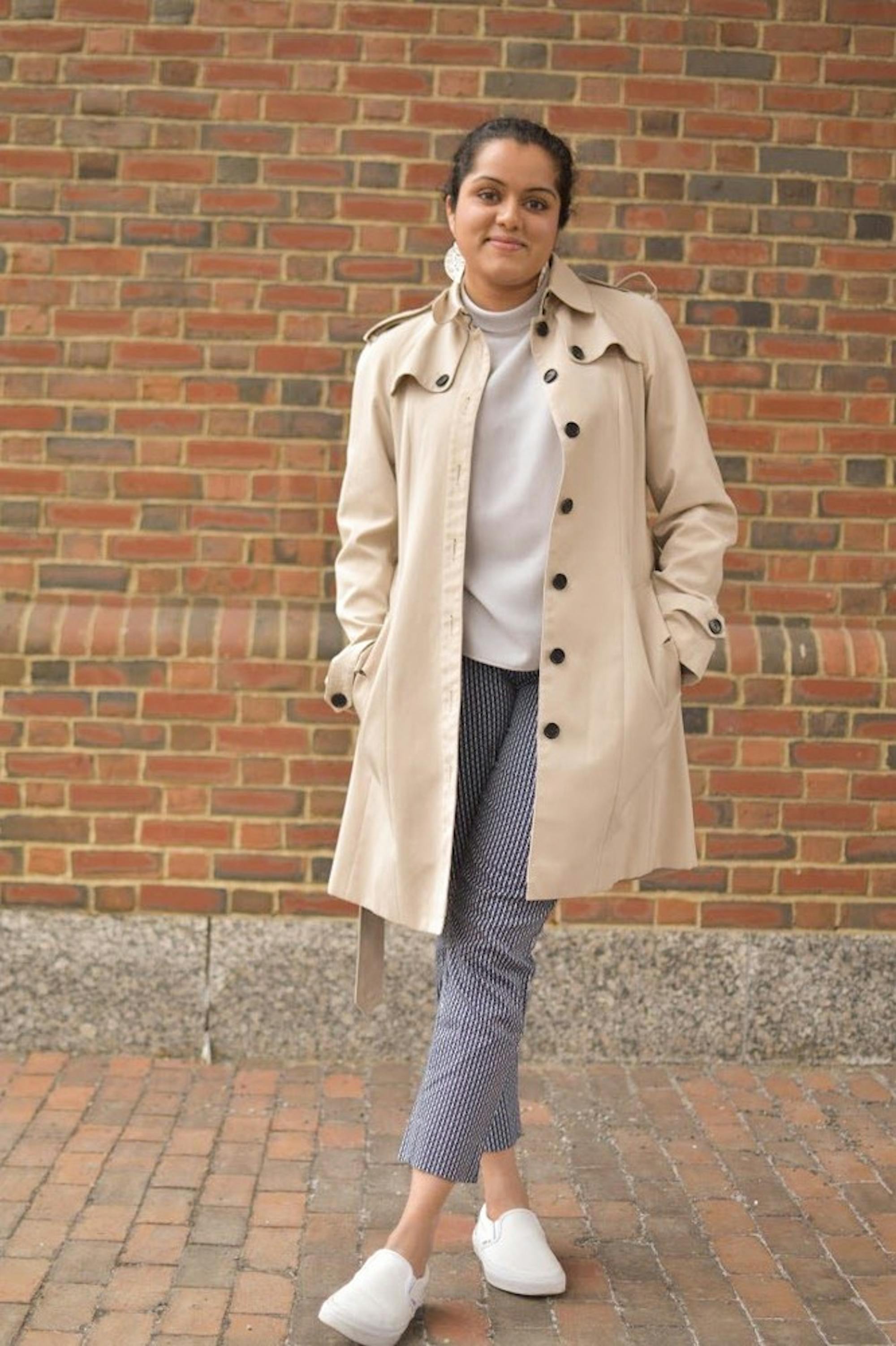Arati Gangadharan ’18 was nervous when she joined Raaz, Dartmouth’s South Asian dance team. Although she had 15 years of training in Bharatanatyam and Mohiniattam, classical forms of dance that are thousands of years old, Raaz also performs styles like Bhangra and hip-hop that are outside the classical canon. But after four years with the team, Gangadharan has been able to successfully blend her classical skills with the less familiar dance forms.
“Arati’s talent and playfulness are incredibly valuable to the team,” fellow Raaz member Shinar Jain ’18 said.
Gangadharan started dancing at the age of three. She initially learned Bharatanatyam, a dance style characterized by its intense, masculine style that is typically not very emotive. Mohiniattam, by contrast, is more graceful and expressive, meant to portray silk blowing in the wind. Before joining Raaz, Gangadharan was unsure how well her classical training had prepared her to explore other forms of dance.
“I didn’t really know how I was going to fit in with the team, and the first few months were a huge learning curve for me … I had a difficult time getting out of what I was taught for 15 years,” Gangadharan said.
Once she got past the learning curve, Gangadharan found many similarities between the dance styles. Classical and hip-hop are time sensitive, with synchronous and individualized movements. Bhangra and hip-hop, on the other hand, include bigger and more powerful movements to capture audiences’ attention.
For Gangadharan, classical dance remains the most comfortable.
“Because I’ve been doing it for so long, it’s basically muscle memory for me now — I don’t even get out of breath now,” Gangadharan said. “I can do Bhangra for a minute and I’ll be almost passed out on the ground.”
Before coming to Dartmouth, Gangadharan spent five to seven days a week at dance practice and grew used to the structure that dance imposed on her life. Raaz gave her the opportunity to continue dancing with set practice times. The group has provided a dance community for Gangadharan as well as a community of Indian women. Without a strong South Asian cultural center on campus, Gangadharan — who was heavily involved in the Indian community in her Michigan hometown — says she felt culturally lost on her arrival at Dartmouth. She initially found it difficult to practice the traditions and customs she holds dear, but soon found a home in Raaz. The team can come together and celebrate the qualities that unite them, while also being comfortable enough to discuss what separates them from each other.
“It’s very isolating to be an Indian woman on campus,” Gangadharan said. “The nice thing is that when you’re surrounded by 15 girls that feel the same thing, you are able to find a solution together of how to make it work and help each other out.”
The team celebrates Indian holidays together, and many team members have relatives living close to campus, allowing them to eat authentic Indian home-cooked meals. Raaz also co-sponsors multicultural events with other communities on campus.
“In terms of co-sponsoring intersectional events, Arati has always been the one to put forward ideas,” said Yesenia Mejia ’18, a close friend of Gangadharan. “It’s always amazing to have her be so inviting and share her culture with others.”
A neuroscience major and a public policy minor, Gangadharan plans to go to medical school while continuing to pursue dance.
“I probably will go back to classical after college, but I do want to push myself to continue learning different styles,” she said.
If she finds herself in a big city, Gangadharan hopes to continue teaching dance or even try out for a professional dance team. And after expanding the boundaries of her classical training in Raaz, she is looking to branch out even further. Next on the list: ballroom or Brazilian Capoeira.




